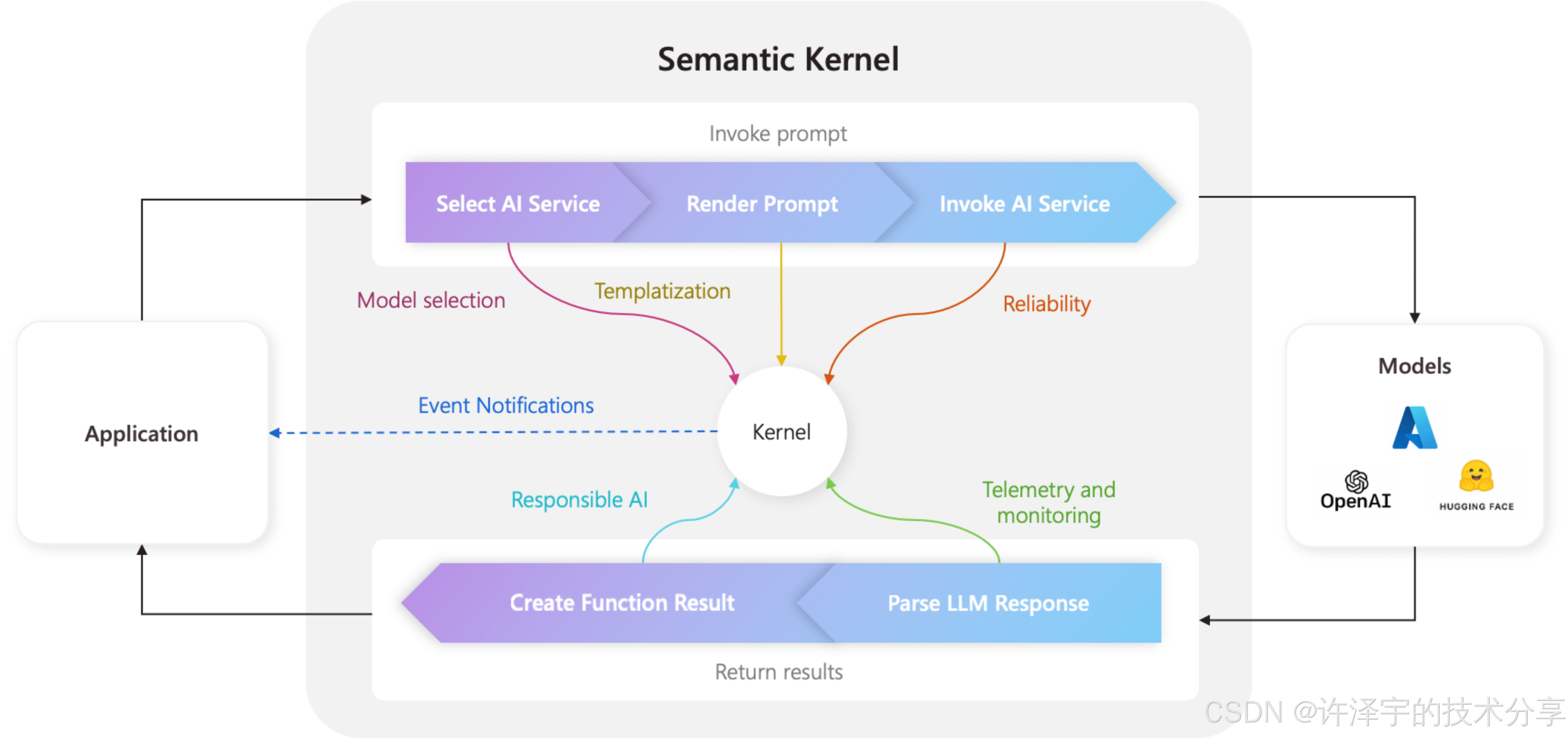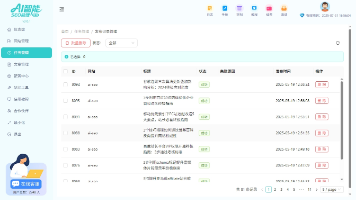Semantic Kernel AgentGroupChat 多Agent发言控制机制详解
AgentGroupChat是SemanticKernel中管理多Agent对话的核心组件,提供灵活的发言控制和终止机制。核心包括AgentGroupChat类(管理Agent列表和执行设置)和AgentGroupChatSettings(配置选择/终止策略)。选择策略支持顺序选择(SequentialSelectionStrategy)或基于AI函数的智能选择(KernelFunctionSel
概述
AgentGroupChat 是 Semantic Kernel 中用于管理多个 Agent 之间对话的核心组件。它提供了灵活的机制来控制哪个 Agent 在什么时候发言,以及如何终止对话。
核心组件
1. AgentGroupChat 类
AgentGroupChat 是多Agent对话的主要管理器,位于 Microsoft.SemanticKernel.Agents 命名空间中。
public sealed class AgentGroupChat : AgentChat
{
// 参与聊天的Agent列表
public IReadOnlyList<Agent> Agents { get; }
// 执行设置,控制Agent选择和终止策略
public AgentGroupChatSettings ExecutionSettings { get; set; }
// 指示对话是否完成
public bool IsComplete { get; set; }
}
2. AgentGroupChatSettings 配置
控制AgentGroupChat行为的核心配置类:
public class AgentGroupChatSettings
{
// Agent选择策略 - 决定下一个发言的Agent
public SelectionStrategy SelectionStrategy { get; init; } = new SequentialSelectionStrategy();
// 终止策略 - 决定何时结束对话
public TerminationStrategy TerminationStrategy { get; init; } = new DefaultTerminationStrategy();
}
Agent选择策略 (SelectionStrategy)
1. SequentialSelectionStrategy (顺序选择策略)
默认策略,按照Agent加入聊天的顺序轮流发言。
// 创建Agent
ChatCompletionAgent agent1 = new() { Name = "Agent1", Instructions = "..." };
ChatCompletionAgent agent2 = new() { Name = "Agent2", Instructions = "..." };
// 创建群组聊天,使用默认的顺序选择策略
AgentGroupChat chat = new(agent1, agent2)
{
ExecutionSettings = new()
{
SelectionStrategy = new SequentialSelectionStrategy(), // 可选,这是默认值
TerminationStrategy = new KernelFunctionTerminationStrategy(...)
}
};
特点:
-
Agent按加入顺序轮流发言
-
简单可预测的发言顺序
-
适用于结构化对话场景
2. KernelFunctionSelectionStrategy (函数选择策略)
智能策略,使用AI函数根据对话历史动态选择下一个发言的Agent。
// 定义选择函数
KernelFunction selectionFunction = KernelFunctionFactory.CreateFromPrompt(
"""
根据对话历史选择下一个发言的参与者。
参与者列表:
- ReviewerName (审核者)
- CopyWriterName (文案写手)
选择规则:
- 用户输入后,轮到 CopyWriterName
- CopyWriterName 回复后,轮到 ReviewerName
- ReviewerName 提供反馈后,轮到 CopyWriterName
对话历史:
{{$history}}
""");
// 应用选择策略
AgentGroupChat chat = new(agentWriter, agentReviewer)
{
ExecutionSettings = new()
{
SelectionStrategy = new KernelFunctionSelectionStrategy(selectionFunction, kernel)
{
// 结果解析器 - 从函数结果中提取Agent名称
ResultParser = (result) => result.GetValue<string>() ?? "DefaultAgent",
// 变量名配置
AgentsVariableName = "agents", // Agent列表的变量名
HistoryVariableName = "history", // 对话历史的变量名
}
}
};
特点:
-
基于AI智能决策
-
可根据对话内容动态调整
-
支持复杂的选择逻辑
-
高度可定制
发言控制的具体方法
1. 自动发言控制
使用 InvokeAsync() 方法让AgentGroupChat自动管理Agent发言:
// 添加用户消息
chat.AddChatMessage(new ChatMessageContent(AuthorRole.User, "请帮我写一个广告文案"));
// 自动执行对话,根据SelectionStrategy选择Agent
await foreach (ChatMessageContent content in chat.InvokeAsync())
{
Console.WriteLine($"# {content.Role} - {content.AuthorName}: '{content.Content}'");
}
2. 手动指定Agent发言
使用 InvokeAsync(Agent agent) 方法手动指定特定Agent发言:
// 手动让特定Agent发言,忽略SelectionStrategy
await foreach (ChatMessageContent content in chat.InvokeAsync(specificAgent))
{
Console.WriteLine($"# {content.Role} - {content.AuthorName}: '{content.Content}'");
}
3. 控制Agent是否加入聊天
// 让Agent发言并加入聊天(默认行为)
await chat.InvokeAsync(newAgent, isJoining: true);
// 让Agent发言但不加入聊天
await chat.InvokeAsync(guestAgent, isJoining: false);
终止策略 (TerminationStrategy)
1. 基于关键词的终止
// 自定义终止策略
public class ApprovalTerminationStrategy : TerminationStrategy
{
public List<Agent> Agents { get; set; } = new(); // 可以触发终止的Agent
protected override Task<bool> ShouldAgentTerminateAsync(
Agent agent,
IReadOnlyList<ChatMessageContent> history,
CancellationToken cancellationToken)
{
// 只有指定的Agent可以触发终止
if (!Agents.Contains(agent))
return Task.FromResult(false);
// 检查最后一条消息是否包含"approve"
var lastMessage = history.LastOrDefault();
bool shouldTerminate = lastMessage?.Content?.Contains("approve", StringComparison.OrdinalIgnoreCase) ?? false;
return Task.FromResult(shouldTerminate);
}
}
// 应用终止策略
AgentGroupChat chat = new(agentWriter, agentReviewer)
{
ExecutionSettings = new()
{
TerminationStrategy = new ApprovalTerminationStrategy()
{
Agents = [agentReviewer], // 只有审核者可以批准
MaximumIterations = 10, // 最大轮次限制
}
}
};
2. 基于函数的终止策略
KernelFunction terminationFunction = KernelFunctionFactory.CreateFromPrompt(
"""
判断文案是否已被批准。如果是,回复单词:yes
对话历史:
{{$history}}
""");
var terminationStrategy = new KernelFunctionTerminationStrategy(terminationFunction, kernel)
{
Agents = [agentReviewer],
ResultParser = (result) => result.GetValue<string>()?.Contains("yes", StringComparison.OrdinalIgnoreCase) ?? false,
HistoryVariableName = "history",
MaximumIterations = 10,
};
完整示例
示例1:简单的文案审核流程
public async Task SimpleReviewWorkflowAsync()
{
// 创建Agent
ChatCompletionAgent writerAgent = new()
{
Name = "CopyWriter",
Instructions = "你是一个有10年经验的文案写手,以简洁和幽默著称。",
Kernel = CreateKernelWithChatCompletion(),
};
ChatCompletionAgent reviewerAgent = new()
{
Name = "ArtDirector",
Instructions = "你是艺术总监,负责审核文案是否可以发布。",
Kernel = CreateKernelWithChatCompletion(),
};
// 创建群组聊天
AgentGroupChat chat = new(writerAgent, reviewerAgent)
{
ExecutionSettings = new()
{
// 使用顺序选择策略
SelectionStrategy = new SequentialSelectionStrategy(),
// 自定义终止策略
TerminationStrategy = new ApprovalTerminationStrategy()
{
Agents = [reviewerAgent],
MaximumIterations = 10,
}
}
};
// 开始对话
chat.AddChatMessage(new ChatMessageContent(AuthorRole.User, "概念:用鸡蛋盒制作的地图"));
await foreach (ChatMessageContent content in chat.InvokeAsync())
{
Console.WriteLine($"# {content.Role} - {content.AuthorName}: '{content.Content}'");
}
}
示例2:智能选择策略
public async Task SmartSelectionWorkflowAsync()
{
// 定义智能选择函数
KernelFunction selectionFunction = KernelFunctionFactory.CreateFromPrompt(
"""
根据最近参与者的行为选择下一个发言者。
只能从以下参与者中选择:
- CopyWriter
- ArtDirector
选择规则:
- 用户输入后 → CopyWriter
- CopyWriter回复后 → ArtDirector
- ArtDirector反馈后 → CopyWriter
对话历史:
{{$history}}
""");
AgentGroupChat chat = new(writerAgent, reviewerAgent)
{
ExecutionSettings = new()
{
SelectionStrategy = new KernelFunctionSelectionStrategy(selectionFunction, kernel)
{
ResultParser = (result) => result.GetValue<string>() ?? "CopyWriter",
HistoryVariableName = "history",
},
TerminationStrategy = new KernelFunctionTerminationStrategy(terminationFunction, kernel)
{
Agents = [reviewerAgent],
ResultParser = (result) => result.GetValue<string>()?.Contains("yes", StringComparison.OrdinalIgnoreCase) ?? false,
MaximumIterations = 10,
}
}
};
}
最佳实践
1. Agent命名
-
为每个Agent设置清晰的名称
-
名称应该反映Agent的角色和职责
-
在选择策略中使用Agent名称进行识别
2. 选择策略设计
-
简单场景:使用
SequentialSelectionStrategy -
复杂逻辑:使用
KernelFunctionSelectionStrategy -
在函数中明确定义选择规则
-
提供默认选择以处理异常情况
3. 终止条件
-
设置合理的
MaximumIterations避免无限循环 -
明确定义终止条件
-
考虑多种终止场景(成功完成、错误、超时等)
4. 错误处理
-
在选择函数中处理边界情况
-
提供默认Agent选择
-
监控对话状态和Agent响应
5. 性能优化
-
避免过于复杂的选择逻辑
-
合理设置最大迭代次数
-
考虑使用缓存优化重复计算
总结
AgentGroupChat 提供了强大而灵活的多Agent对话控制机制:
-
SelectionStrategy 控制Agent发言顺序
-
SequentialSelectionStrategy:简单轮流 -
KernelFunctionSelectionStrategy:智能选择
-
-
TerminationStrategy 控制对话终止
-
基于条件的自动终止
-
最大迭代次数限制
-
-
手动控制 支持直接指定Agent发言
-
灵活配置 通过
AgentGroupChatSettings自定义行为
通过合理组合这些机制,可以实现从简单轮流对话到复杂智能协作的各种多Agent交互场景。
更多推荐
 已为社区贡献6条内容
已为社区贡献6条内容










所有评论(0)